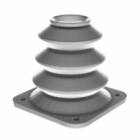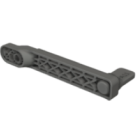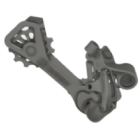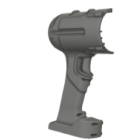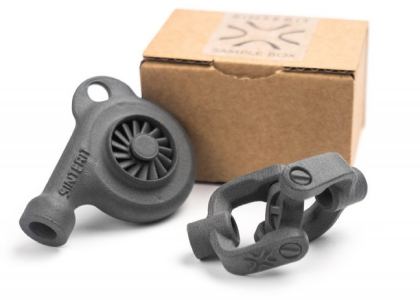How to foiling 3D prints
Foiling is one of the most eye-catching ways to elevate the aesthetic of a 3D printed part. It brings a professional, often luxurious finish to models using metallic or holographic surfaces, offering an appearance that’s difficult — and expensive — to replicate with paint alone. Whether you’re aiming to simulate polished metal, gold leaf, or mirror chrome, foiling turns ordinary 3D prints into showcase pieces. This technique is especially popular in cosplay, product mockups, architecture, or jewelry prototyping — any time visual impact matters.
Understanding foiling and its role in 3D post-processing
Foiling, also known as metallic film transfer, involves applying a thin metallic film to the surface of a model. For 3D prints, this isn’t always done with industrial foil machines — instead, it’s typically applied manually using adhesives and pressure, or thermally using a laminator or iron. The results can mimic polished gold, brushed aluminum, or even iridescent or patterned effects that paint can’t quite achieve.
The key challenge in foiling 3D printed parts lies in surface quality. Layer lines, seams, and print imperfections will be amplified by reflective foil, so proper surface prep is critical before any decorative work begins.
Preparing the surface for foil application
Before applying foil, make sure the surface is completely smooth. For FDM prints, this means sanding, priming, and often applying a filler or base coat to remove any stepping or roughness. Resin or SLS prints typically require less surface prep but still benefit from polishing or sealing with a smooth base coat. For PLA prints, avoid excessive heat during thermal transfer, as the material can deform above 60–70 °C. SLA or DLP resin prints foil very well, but must be fully cured and free of the oxygen inhibition layer.
Use a high-build primer or spray putty to even out the surface, then sand it down again. A glossy black undercoat is commonly used beneath metallic foil to boost contrast and depth — particularly for chrome or gold effects. Foiling over matte or uneven surfaces often leads to patchy adhesion and visual inconsistency.
Foiling methods for 3D prints
There are several effective methods to apply foil to 3D printed parts. The choice depends on the type of foil you’re using, the geometry of your print, and the equipment you have on hand.
- Heat transfer foil (manual or laminator-based)
Apply an adhesive layer to the print (e.g., toner-reactive glue, sizing, or pressure-sensitive adhesive), place the foil on top, and press it with heat — either using a laminator, a foil applicator, or a household iron. Keep in mind that PLA should not be heated above 70 °C, while ABS tolerates up to around 100 °C. Office laminators may exceed safe PLA temperatures.
- Adhesive-backed foil sheets
These are essentially metallic stickers that can be cut and applied directly to the surface. They’re great for geometric panels or accents but less flexible for organic shapes. On sharp edges or complex details they may peel off unless reinforced with heat or additional adhesive.
- Liquid foil transfer
Using brush-on adhesives and transfer foils, this technique offers the most freedom for irregular shapes. It’s ideal for highlighting details or selectively foiling only parts of a design.
Regardless of the method, foiling demands patience. Complex shapes may require segmenting the foil, stretching it slightly, or using a burnishing tool to press it into surface contours.
Tips for successful foiling
Once you’ve chosen your paint and applied a base layer, layering and detailing come next. Use thin coats to avoid drips or loss of detail. For realistic effects, techniques like weathering, dry brushing, and A few essential techniques can make the difference between a polished, professional finish and a wrinkled mess.
- Always test on a scrap print first. Different foils and adhesives behave differently depending on temperature and pressure.
- Work in a clean, dust-free area. Foil sticks to everything — especially where you don’t want it.
- Use a soft cloth or silicone roller to smooth the foil during application and remove bubbles or wrinkles.
Foiling is primarily a visual effect. The metallic layer is thin and prone to scratches or wear if the part is handled frequently. For functional pieces, or those subject to touch, a protective clear coat is highly recommended.can simulate rust, dirt, or depth. Masking tape or liquid masking can help isolate colors for clean lines, especially on multicolor parts.
Combining foiling with other finishing techniques
Foiling doesn’t have to be the final step. Many designers combine 3D print foiling with painting, tinting, or clear coats to protect and customize the finish. For example, you can foil a surface and then apply a tinted varnish to create bronze or rose gold effects. Or foil selected areas while leaving others matte for contrast and texture variation.
Some even combine foil with 3D print coating methods, such as epoxy resin or polyurethane, to seal and protect the finish — especially when the part is going to be handled or exposed to wear. Epoxy increases durability but slightly reduces the mirror-like shine, giving a glassy effect. UV-resistant clear acrylic varnishes are often better for preserving a metallic look.
Summary
Foiling 3D prints is a high-impact finishing technique that demands patience, preparation, and precision. When done correctly, it adds a layer of sophistication and polish that paint alone can’t match. Whether you’re using heat transfer foil, adhesive films, or brush-on transfer, the key lies in perfecting your surface and applying foil with care. From cosplay props to product prototypes, foiling can take your 3D prints from plastic to premium with just a few extra steps.
Explore also
- Removing supports from 3D prints
- Sanding 3D prints
- Polish 3D printed
- Sandblasting 3D prints
- How to fill gaps in 3D prints
- Priming 3D prints
- How to paint 3D print
- How to metal plating 3D print
Related categories




